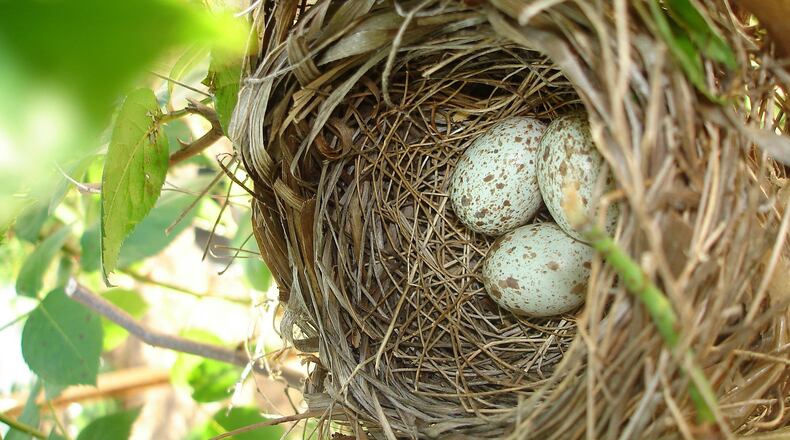Could you build a simple, cup-shaped bird nest, like that of a Northern cardinal, strong enough to withstand the vicissitudes of spring weather and hold three to five nestlings?
I accepted that challenge years ago during an ornithology class. Using the same materials and dimensions that the bird uses, I tried to make a structure resembling a cardinal nest that would be as strong, lightweight and pliable as the bird’s own construction.
I failed miserably. Bird nest construction is still little more than a mystery: How do creatures with tiny brains build humble nests that are wonders of engineering?
One researcher trying to unravel the puzzle is Hunter King, a physicist at the University of Akron, who wrote: “When a cardinal builds her iconic cup-nest, she uses her own body as template and molds thin twigs, grass strands and bark strips into a structure that, despite its softness, reliably holds its shape against various mechanical perturbations.”
Similar descriptions could be made for the cup-shaped nests of dozens of other songbird species. In addition to the cardinal, some other common birds that may build cup-shaped nests in your yard this spring include:
• American robin: Nest usually made of woven grass but reinforced with generous gobs of mud.
• Ruby-throated hummingbird: Makes tiny nest from spiderwebs and plant down; covers exterior with lichens that provide near-perfect camouflage.
• Pine warbler: Nest made of bark strips, pine needles, twigs and other plant material; lined with hair, feathers and other fine material.
• Brown thrasher: Nest composed of twigs, dead leaves and other vegetation; may be in dense bush or thorny shrub or on ground.
• Blue jay: Nest made of twigs, small roots, bark strips, moss, cloth, paper and feathers, occasionally with mud.
• Northern mockingbird: Male builds nest of twigs; female lines it with grass.
• Carolina wren: Loosely constructed cup-nest made of bark strips, dried grasses, dead leaves, pine needles, hair, feathers, straw, shed snakeskin, paper, plastic or string.
IN THE SKY: From David Dundee, Tellus Science Museum astronomer: The moon will be new on Friday, April 1. The only visible planets now are Venus, Mars and Saturn in the east, just before sunrise.
Charles Seabrook can be reached at charles.seabrook@yahoo.com.
About the Author




